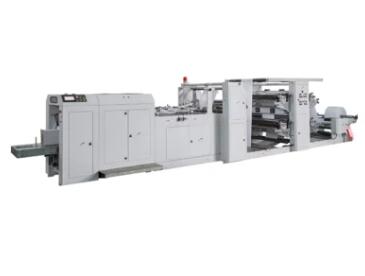What are the typical maintenance for printing machinery to ensure consistent print quality
2023-10-25
Maintaining printing machinery is crucial to ensure consistent print quality, minimize downtime, and extend the life of the equipment. Here are some typical maintenance tasks for printing machinery:
1. Regular Cleaning: Regularly clean all accessible parts of the machinery, including rollers, plates, ink systems, and paper feed mechanisms. Removing dust, ink residue, and debris helps prevent print defects and ensures smooth operation.
2. Inspect and Replace Consumables: Check and replace consumable parts, such as blankets, rollers, and print heads, at recommended intervals. Worn or damaged components can lead to inconsistent print quality.
3. Lubrication: Lubricate moving parts as recommended by the manufacturer. Proper lubrication ensures smooth and accurate movement of components, reducing friction and wear.
4. Calibration and Registration: Periodically check and adjust color registration and calibration to maintain color accuracy. Misaligned colors can result in print defects.
5. Ink System Maintenance: In ink-based printing methods, monitor and maintain the ink system. This includes cleaning ink lines, checking ink viscosity, and replacing inks that have aged or become contaminated.
6. Dampening System Maintenance: For offset printing, maintain the dampening system by regularly checking and adjusting the dampening solution and water balance. Proper dampening is essential for consistent print quality.
7. Plate Maintenance: Inspect and maintain printing plates. Replace worn or damaged plates to ensure sharp image reproduction.
8. Quality Control and Inspection: Use built-in quality control systems or third-party inspection tools to monitor print quality and detect defects. Regularly calibrate these systems for accuracy.
9. Monitor and Adjust Color Profiles: If color consistency is essential, monitor and adjust color profiles to ensure that the output matches the desired color specifications.
10. Clean and Maintain UV Curing Systems: If the printing process involves UV curing, keep the UV lamps and reflectors clean and replace them when they lose efficiency.
11. Maintain Drying Systems: For drying or curing processes, maintain and clean any heat sources or UV lamps. Proper curing is crucial for ink adhesion and durability.
12. Software and Firmware Updates: Keep the printer's control software and firmware up to date. Updates may include bug fixes, performance improvements, and new features.
13. Operator Training: Ensure that the equipment operators are trained in proper machine operation and maintenance procedures. Trained operators are more likely to recognize and address issues promptly.
14. Spare Parts Inventory: Keep a supply of critical spare parts on hand to minimize downtime in case of unexpected failures. This includes components like print heads, belts, sensors, and bearings.
15. Preventive Maintenance Schedule: Develop and follow a preventive maintenance schedule based on the manufacturer's recommendations. This schedule should include regular checks, cleaning, and servicing tasks.
16. Environmental Conditions: Maintain proper environmental conditions, including temperature and humidity, to prevent issues like paper curling or ink drying too quickly.
17. Record Keeping: Keep detailed records of maintenance activities, including dates, tasks performed, and any issues encountered. These records can help in diagnosing recurring problems and ensuring consistent maintenance.
Regular and proactive maintenance is essential to keep printing machinery in optimal working condition. By following a well-structured maintenance plan, you can avoid costly breakdowns, reduce waste, and ensure that your printing machinery consistently produces high-quality prints.



